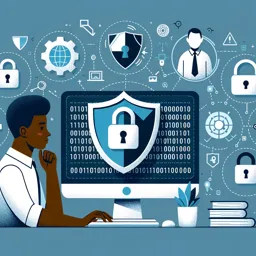What is Digital Forensics?
Digital forensics is a branch of cyber security focused on the identification, preservation, analysis, and presentation of digital evidence. It plays a pivotal role in investigating cybercrimes, data breaches, and unauthorized access to digital systems. Experts in this field help law enforcement and organizations respond to incidents and understand what happened during cyber breaches.
The Role of Digital Forensics in Cyber Security
With the increase in digital threats, digital forensics has become indispensable for organizations and governmental agencies. It complements cyber security measures by providing insights into how breaches occur, tracking down culprits, and gathering evidence suitable for legal proceedings.
- Incident Response: After a breach, digital forensics helps reconstruct the timeline and scale of the attack.
- Evidence Collection: Digital forensic experts ensure evidence remains intact and admissible in court.
- Prevention Insights: Lessons learned during investigations guide organizations in improving their security practices.
Core Steps in Digital Forensics Investigation
- Identification: Recognizing potential sources of digital evidence, such as computers, mobile devices, and network logs.
- Preservation: Safeguarding data to prevent alteration, often through imaging and write blockers.
- Analysis: Examining data to uncover traces of malicious activity, deleted files, and user actions.
- Documentation: Creating detailed reports that outline the steps taken, evidence found, and chain of custody.
- Presentation: Presenting findings in easy-to-understand language to courts or management.
Tools and Techniques
Digital forensic professionals rely on a mix of software and hardware tools, including disk imagers, file recovery utilities, and network analyzers. Techniques like data carving, log analysis, and malware reverse engineering are commonly used to extract and scrutinize digital evidence.
Challenges in Digital Forensics
The field faces unique challenges, including:
- Encryption and secure deletion tools making data recovery more difficult
- Ever-evolving technologies, such as cloud services and IoT devices, requiring constant skill updates
- Legal and privacy considerations around evidence collection and analysis
Careers in Digital Forensics
Digital forensics is a rapidly growing field, offering opportunities in law enforcement, private companies, consulting firms, and government agencies. Typical roles include digital forensic analyst, incident responder, and forensic investigator. Certifications and continuous education are encouraged to stay up to date with the latest tools and threats.





























